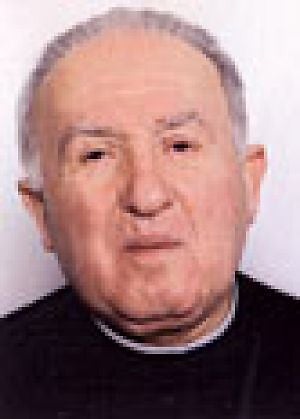'Hi, deliver me from evil': Catholic Church sets up an exorcist hotline to deal with demand

Your support helps us to tell the story
From reproductive rights to climate change to Big Tech, The Independent is on the ground when the story is developing. Whether it's investigating the financials of Elon Musk's pro-Trump PAC or producing our latest documentary, 'The A Word', which shines a light on the American women fighting for reproductive rights, we know how important it is to parse out the facts from the messaging.
At such a critical moment in US history, we need reporters on the ground. Your donation allows us to keep sending journalists to speak to both sides of the story.
The Independent is trusted by Americans across the entire political spectrum. And unlike many other quality news outlets, we choose not to lock Americans out of our reporting and analysis with paywalls. We believe quality journalism should be available to everyone, paid for by those who can afford it.
Your support makes all the difference.The Catholic Church has established an exorcist hotline in Milan, its biggest diocese, to cope with demand. Monsignor Angelo Mascheroni, the diocese’s chief exorcist since 1995, said the curia had also appointed twice as many exorcists to cope with a doubling in the number of requests for help over 15 years.
“We get many requests for names, addresses and phone numbers; that’s why we’ve set up a switchboard in the curia from Monday to Friday from 2.30pm to 5pm,” he told the chiesadimilano website.
“People in need can call and will be able to find a priest in the same area who doesn’t have to travel too far.” And to that end, the number of demon-busting priests on call has increased from six to 12.
The Monsignor said he knew of one exorcist who had been seeing up to 120 people a day. “But with so little time per client he was only able to offer a quick blessing. That’s not enough,” he said. ”There should be two to four appointments a day, no more, otherwise it’s too much.”
It’s not clear why the number of suspected possessions has risen so sharply. But Monsignor Mascheroni said that part of the increase might be explained by the rising numbers of parents having difficulty controlling disobedient teenagers.
“Usually the parents call [because they are] concerned about a child who won’t go to school or who’s taking drugs or rebelling. In reality it’s not a demon, but when they’re 18 years old young people don’t want to be told what to do.”
He warned that many worried and vulnerable people were at risk from charlatans. “Magicians demand money; we … give our time, give benediction … all for free. It couldn’t be any other way.”
The Monsignor said that all those who sought help were welcomed. But he added: “The real diabolical phenomena, at least in my experience, are very rare.” He said that “mental phenomena, mental and psychiatric disorders” were often to blame for unusual behaviour.
Not all Catholic exorcists take such a pragmatic approach, however. Father Gabriele Amorth, who was the Vatican’s chief exorcist for 25 years, claims to have dealt with 70,000 cases of demonic possession.
Father Amorth said that sex abuse scandals in the Roman Catholic Church were proof that “the Devil is at work inside the Vatican”. He also claimed that satanic behaviour lay behind Vatican attempts to “cover up” the deaths of Alois Estermann, then commander of the Swiss Guard, his wife and another Swiss Guard, Corporal Cedric Tornay, in 1998.
Father Amorth also took a dim view of fantasy novels and yoga. Practising the latter, he once warned, was “satanic; it leads to evil just like reading Harry Potter”.
The act of exorcism: Catholic practice
Defined by the Catholic Encyclopaedia as “the act of driving out, or warding off, demons, or evil spirits, from persons, places, or things which are believed to be possessed or infested by them, or are liable to become victims or instruments of their malice,” exorcism has been practised by the Church for centuries, but its use has increased dramatically over the last half century.
Subscribe to Independent Premium to bookmark this article
Want to bookmark your favourite articles and stories to read or reference later? Start your Independent Premium subscription today.
Join our commenting forum
Join thought-provoking conversations, follow other Independent readers and see their replies
Comments